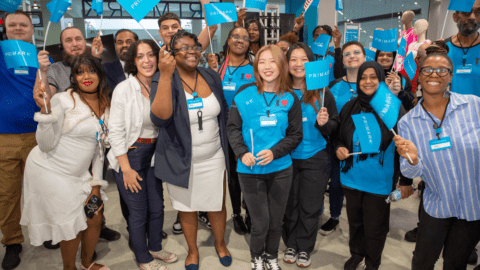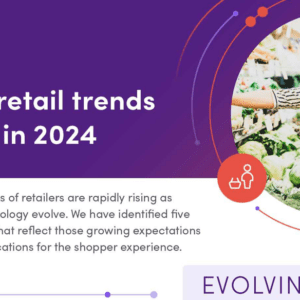Now that the 2012 holiday shopping is behind us, it is clear that the early projections for strong sales were way off base. In reality, this turned out to be the worst season for retailers since the 2008 financial crisis. As a result, many retailers are left scrambling to get rid of excess inventory.
As retailers ask themselves what went wrong and what they might do differently next year, I hope they will consider the missed opportunity to connect with the growing number of more sophisticated consumers looking for value beyond discounted prices. This growing consumer base is savvier in understanding and demanding ethical and environmental products that are in line with their personal values instead of just price point value. These conscious consumers are part of the growing Lifestyles of Health and Sustainability (LOHAS) market.
According to the annual trend research done by the Natural Marketing Institute, the LOHAS consumer segment is 13% to 19% of the population of adults and has close to $300 billion in buying power. LOHAS consumers, who already has a tremendous impact on how companies address issues around the environment and health, are looking more closely than ever at what they buy and where they shop, with a different set of values in mind for their purchasing decisions. Their bottom line is not simply price.
Advertisement
LOHAS consumers are vital to understand because they are the early adopters of values based products and services and bring them to mainstream awareness. They are also willing to put their money where their mouths are, showing tremendous loyalty to the brands that reflect their values. They are the consumers who have demanded products such as hybrid vehicles, CFL light bulbs and organic foods find shelf space in big-box stores and will continue to do so.
I see five areas where most retailers missed the boat in their 2012 marketing campaigns when it comes to connecting with their customers:
1. Transparency: “Green fatigue” means LOHAS consumers are taking a closer look at where products come from, as well as how and where they are made and transported. They demand a closer look across the supply chain of the products they buy. Transparency is all about being clear about your intentions, actions and impacts. Companies that can openly share their successes and failures, and leverage the tools and avenues of social media and engage with their customers whole-heartedly will succeed. Companies and nonprofits alike can learn from the upstart nonprofit “charity: water.” In just six years, charity:water succeeded in creating a compelling brand, a track record of results and a tribe of committed, engaged supporters.
2. Balance: Consumers lives today are more hectic than ever. For more and more people, the work/life balance is out of sync, and this situation doesn’t seem likely to change any time soon. The 2012 Stress in America survey revealed that, as it happens year after year, people in the United States suffer from high levels of stress. Research suggests that stress, which has been shown to adversely affect animal brains, is also detrimental for humans. The desire and need for personal time and space is increasing. LOHAS consumers are on the leading edge of living more balanced and fulfilling daily lives, putting their collective buying power toward purchases and experiences that bring balance to their lives against all the craziness in these tough, chaotic times. They have moved from impulse buy to deliberate investment.
3. Personal Development: A key concern to LOHAS consumers is achieving their full human potential and living more aspirational lives. Apple, BMW and Whole Foods are just a few companies that provide consumers with items and environments that help consumers achieve this goal. People support and admire these well-known brands for different reasons, but one common thread is that these companies think way ahead of the curve when it comes to innovation, design and comfort.
4. Community: Building community around a brand is more important than ever as “bigger,” “better,” “faster” and “more” have been replaced by “shared experience” and “conversation.” Retailers need to build a strong and devoted community dialogue as a sounding board for what their customers want and need. Consumers are more skeptical about ads and more interested in word-of-mouth recommendations. According to a 2009 Nielsen study, 90% of consumers trust peer recommendations, while only 33% trust online ads. Myriad online communities and blogs are examples of how brands like Method, Zappos, Care2 and Ecomom present sensitivity to this in their marketing. Make sure to have a distinct personality and strong voice rather than dry response to any feedback you may get.
5. Spirituality: The Mayan prophecy may have now come and gone, but the pursuit by the LOHAS consumer of a more spiritually rewarding life remains strong. Today’s LOHAS consumer seeks a more spiritually rewarding life. The current growth in this market group strongly supports the notion that spirituality is no longer relegated to the New Age periphery but is undeniably migrating to the center of mainstream cultural awareness. This can also be seen in the yoga market. The 2012 Yoga in America study, released by Yoga Journal, shows that 20.4 million Americans now practice yoga, compared to 15.8 million from the 2008 study, an increase of 29%. These consumers seek out and support brands that understand and reflect their spiritual goals.
Ted Ning, who is the Executive Director of LOHAS, is renowned for leading the annual LOHAS Forum, LOHAS.com and LOHAS Journal the past eight years. He has worked closely with executive teams pursuing environmental, social and wellness innovations at corporations including Coca-Cola, Jurlique, Macy’s, MINI and Natureworks. Ning is uniquely positioned to have a large-picture understanding of macro trends affecting the LOHAS market that can indirectly affect how a company conducts business in the future and assess new opportunities.








